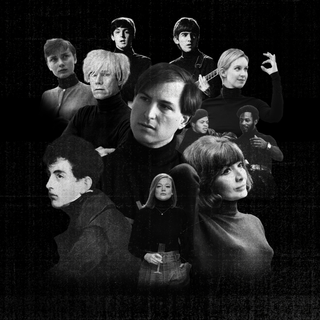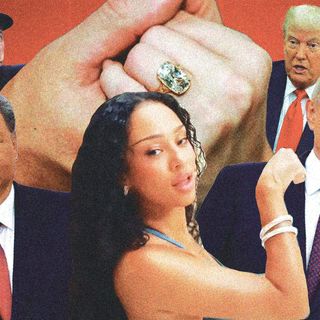
The End of the Marriage Plot
Bollywood's imagination of partnership only sees liberation outside marriage, never within it.

A friend of mine calls herself marriage-suspicious; I have friends who are marriage-averse, and others marriage-positive, having scurried to tie the knot against opposing advice. You can guess which of them are considered the outliers. After all, in marrying men, they were part of a moral betrayal. They breached the feminist principles that urban women today share.
It is often repulsive for the worldly, contemporary woman to find joy in a man, even more damning when it’s because he has bought you a ring. Our imagination of marriage has not yet considered any other prospect.
In Bollywood too, the fate of the marriage plot is preordained. When the marriage is unhappy, there is a virtuous wife, an ungenerous husband, and fiendish in-laws. When the marriage is happy, there is a virtuous wife, a reformed husband, and indulgent in-laws. The marriage plot may be Bollywood’s favourite storyline, but its imagination of marriage itself remains paltry. It is portrayed as either a snare to escape or a prize to attain and redefine. This overgeneralization of partnership cauterizes our storytelling and, in turn, our imagination of other possibilities.
Across these marriage plots, feeble attempts to depict the interior life of marriage end up binding it to the collective.
In Karan Johar’s Rocky Aur Rani Kii Prem Kahaani, the supposedly firebrand Rani already knows what marriage might take from her. “I’ll have to do all the adjusting… and I’m not okay with that,” she warns her lover. Eventually, she marries into his conservative family, her happy ending marked by an elaborate wedding. Her in-laws, it is implied, have “adjusted” along with her. In Sister Midnight, Karan Kandhari turns the marriage plot on its head. A disgruntled wife, who happens to be a vampire, finds that her labour – feeding, waiting, and trailing her husband through family visits – yields no satisfaction, not even in sex, only exhaustion. It’s after she accidentally kills him that the film grants her glee.
For many urban women, self-actualisation wrenched from marital intimacy remains the sole avenue afforded to us. While modernization has changed how many of us get married – finding a man pre-selected by our class-caste networks all by ourselves – little has changed about marriage itself. Many of us, we assume, resign ourselves to its fate.
In her unhappy marriage plot, the missus in Mrs., a trained dancer, labours first in the kitchen, then in the bedroom, and is forced to surrender the small pleasure of posting videos of her choreography, the humiliations neverending. As in Sister Midnight, only leaving her husband putatively frees her; the union itself offers no tempting possibilities. Marriage, they suggest, can never tend to the individuals involved; it exists only in service of conservatism – social, cultural, and moral.
Marriage Is Letting Us Down. Should There Be a Right Not to Marry?
Across these marriage plots, feeble attempts to depict the interior life of marriage end up binding it to the collective. An ungratified wife in a Karan Johar short comically orgasms in front of her mother-in-law and sister-in-law, as an unsuspecting grandmother-in-law jabs at the vibrator remote, mistaking it for the TV controller. The wife’s unwitting audacity horrifies the family, who bristle all the more at her decision not to apologize. In these scenes, matters of intimacy – necessarily exclusive and private – submit to familial intervention. Although the husband’s heedless pleasuring, treated as essential, goes uncontested, the wife’s entitlement to it is raked over. The short’s ending alludes to reconciliation. It is, however, the in-laws who speak to one another about the incident before the couple does. Even once married, their private life is yoked to familial mediation.
Whether happy or unhappy, the marriage plot is faithful only to the family, never to the couple. In the unhappy marriage plot, marriage asphyxiates within a framework that assumes the individual will submit to the meddlesome collective of the family. In the happy one, it is reverence for the abstract, larger-than-life family outside you and your partner’s caprices that mends the union. In choosing to marry, these plots insist, you are already among the sheep. Any attempt to break free from the herd is in vain.
When the Bollywood marriage plot considers an alternative to itself, that possibility seems to take form only outside the scaffolding of marriage. In Laapataa Ladies, a newly wedded bride accidentally left behind cannot remember where her groom lives to return to her marital home. To make do, she works at a tea stall run by a grouchy woman, still in her bridal attire, living a life without a man to take care of her. Once her husband finds her, she emerges a wilful girl, courtesy of their fortuitous separation. The wife only self-actualises outside of marriage; within it, it is, again, rendered impossible.
As Bollywood clings to the hackneyed marriage plot, reform, not reinvention, is all we can hope for.
In all these movies, the “empowered” self of the characters is measured in terms of marriage: its loss, its suspension, and its tentative reformation. Wives, especially, can only be rioting wives, supplicant wives, modern wives. Whether she likes it or not, the wife is always a wife, never characterised outside her wifedom.
As Bollywood clings to the hackneyed marriage plot, reform, not reinvention, is all we can hope for. For the marriage-suspicious woman, there is no vision of a relationship of equals outside her own imagination. She encounters, instead, marriage plots that reproach her for gullibly marrying or for petulantly resisting. The only conception of marriage made available to her is one of unequals, leaving her worse off whether she marries or not.
With little will to reimagine the union, the wife-and-husband characters of the Bollywood marriage plots capitulate to the dictates of the outside world. Many fuss over the fraught entangling of families, the quaint formalities of compromise. In those where tradition is only nominally spurned, as in Made in Heaven, they are tardily progressive. Wives and husbands wane into the thicket of relatives and rituals; their ostensibly liberal marriages never make it on screen, as if to imply, almost unthinkingly, that they don’t exist.
The marriage plot, fixated on familial “duty,” abandons us without a script to imagine the interior of a marriage and, in turn, a world where characters can self-actualise within it. All intimacy that arrives after the wedding is eclipsed by the narrative closure of its spectacle. In the wedding-endings of the happy marriage plot, dialogue thins, the screen flushes with glowing, smiling faces, the rabble-rouser now the picture of a perfect wife, all discomfort swept to the unseen afterlife. In the divorce-endings of the unhappy marriage plot, where intimacy corrodes, it is framed less as an individual failing and more as a societal indictment, as when the husband in Mrs. is rewarded with another wife in tow.
Can Marriage Ever Be Feminist?
If intimacy must answer to the family, companionship stands no chance. It, too, is sacrificed at the altar of collective drama. Although the happy marriage plot usually ends with a wedding, Raj Mehta’s Jugjugg Jeeyo begins with one. Soon, it turns into a stifling ordeal for both wife and husband. Their conversations grow utilitarian, their intimacy warping under the absence of the agonising involvement that a functional marriage demands. Almost noiselessly, they decide they must divorce. It is once they return home to their family that they are compelled to talk to one another. The cathartic row that plonks them onto their happy ending owes itself to the family, not to the characters themselves.
In his writing on marriage, Ambedkar argued that marriage could serve as a form of liberation from endogamous caste‑class and religious codes. The narrative vacuum of such a possibility – when it does not end in tragedy, à la Sairat or Dhadak 2 – leaves us without a model for a relationship of equals, unbound by inherited baggage or intractable institutional problems.
The so-called “progressive” marriage plots – Veere Di Wedding, Badrinath Ki Dulhania, Shaandaar – still frame the union as a milestone, not a field of possibility. Rocky gets Rani. Harry gets Sejal. Krish gets Ananya. And then what? Without the traditional strictures of marriage, these films wouldn’t be Bollywood, where a rom-com without a compulsory matrimony clause is inconceivable. It feels almost precious to catch sight of media that consider marital loneliness, as Dibakar Banerjee’s short in Lust Stories does through the well-worn lens of infidelity. In English Vinglish, the near-infidelity of an eternally undermined housewife with a man who sees her beyond domestic categorisation prompts her husband to finally notice her as an autonomous individual, though belatedly. These remain marriage subplots, occupying an ephemeral niche. Within them lies a recognition that marriage might contain worlds of feeling and neglect left unattended by the rigmaroles of ceremony, obligation, and social expectation on which the typical marriage plot fixates.
If the marriage-suspicious woman marries, she is unlikely to see herself in the media she consumes. And why would she, when reckoning still arrives only outside marriage, never within it, unless through “compromise,” that familiar euphemism for giving in? It’s as if we still live in Jane Austen’s prescriptive world, trusting a lottery husband like Mr. Darcy to redeem marriage itself.
Diya Isha is a writer based in New Delhi and an editorial staffer at The Swaddle. She is on Instagram @contendish.
Related


How We Loved and Lost the Black Turtleneck
